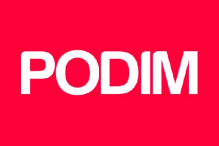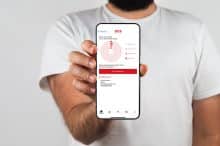Buyers appear during the sales process. The days of IT sales teams managing the sales funnel’s entrance points are over. The days of sales teams pushing potential clients through their own process regardless of what the consumer wants are over. The customer is in command now, and they do not want the old technique of gatekeeping and jumping through hoops in tech sales.
What is the contemporary buyer looking for?
“On Amazon, customers complete 28 per cent of transactions in three minutes or less… and half of all purchases are completed in less than 15 minutes.” This figure was taken directly from Jeff Bezos’ 2020 Letter to Shareholders. If you do not believe this purchasing habit will affect your B2B sales cycle, think again. For many years, B2B and B2C purchasing patterns were thought to be distinct. B2C occurred rapidly and was based on convenience, emotion, and want. B2B was built on logic and reason, with a lengthy and closely managed sales cycle. But that is no longer the case, and we are not going back to the old ways. Consumers of all types have become accustomed to the seamless simplicity of purchasing experiences such as Amazon, Uber, and Airbnb. They came to expect all B2C purchasing experiences to be as smooth as those of the digital titans, and then they began to demand the same B2B purchasing experiences as well.
Buyers have been informed
And they’re receiving more information and completing purchases online -67 per cent of the buyer’s journey is now completed digitally. Buyers are no longer interested in going through several meetings with your BDRs and AEs simply to see a product tour. This is especially true if the product demo does not demonstrate what they want and is deemed a “typical” demo.
Buyers are self-sufficient
That final argument also applies here: customers are now accustomed to being in control of the B2C purchasing process. They are used to browsing on their own time, conducting their own research, and making their own purchasing decisions. This demand for independence is also permeating the B2Bsales process. With the emergence of product-led growth, where prospects can test out your software on their own with only a few clicks, buyers are increasingly demanding greater control over their customer experience. People like to sample items before purchasing them. That is the direction the economy has been trending in recent years, and it shows no indications of abating. This is especially true in the IT industry, where new free trial alternatives for software goods are arriving daily. If you do not provide potential consumers with the opportunity to at least look at your goods and perhaps try it for themselves, they’ll start to question if you’re hiding anything. When you consider that your rivals may be providing access, you may find yourself falling behind before you even begin. Buyers are inundated with alternatives. While all these developments make the B2B tech sector sound like a buyer’s paradise, there are some drawbacks to being a contemporary buyer. The enormous quantity of options and information accessible to customers nowadays is one of the most difficult. Modern customers are often overwhelmed by a flood of freely accessible information and many software solution alternatives. Furthermore, there are more people than ever before driving purchasing choices these days. According to Harvard Business Review, the average number of persons involved in a single B2B purchase has risen to 6.8 in recent years. Software purchasing alternatives are very complicated, and consumers struggle to grasp what they truly want and desire. The solution, however, is not gatekeeping or forcing customers to speak with a salesperson to obtain assistance sorting through alternatives. That is also something that today’s independent buyers do not desire.
How Product-Led Growth Can Aid Growth
- obtain the information they want without being overwhelmed
- grasp exactly what your product performs in a short period of time.
- They should try the goods on their own, without the assistance of your sales personnel.
A well-thought-out product-led growth strategy may provide your customers with the freedom and seamless user experience they have grown to expect. Instead of waiting for your PreSales staff to give them a demo that may or may not fit with their use cases, they can go hands-on with the product themselves. However, there is still a strong emphasis on sales and pre-sales jobs in the product-led growth environment. Many prospects will still want to speak with a salesperson at some time to answer questions, negotiate price, and plan implementation. And your PreSales team will be crucial in ensuring that the demonstrations and freemium choices on your website provide your buyers with a clear and compelling use case.
The New Normal
The buying process for B2B tech sales in 2021 has altered, and there is no turning back. The IT sales and pre-sales teams must adjust to the new normal. Understand changing consumer behaviour and evaluate whether your sales team is making the purchase process seamless or replete with archaic hurdles.









